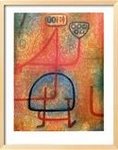In keeping with my current project to check off “things we should see and do before we leave Chicago,” I took my six-year-old daughter and a bevy of her friends to see Seussical, the Musical at the Chicago Shakespeare Theater (CST) on Navy Pier.
Before I continue, I should note that I have served as a “Preamble” scholar at the CST for the past four seasons, delivering pre-performance lectures on the plays audiences were about to see in production. As words cannot express how abundantly I enjoyed these occasions, my readers should know that I am loathe to criticize, publicly, any production at that theater, and that my ensuing comments are directed to Seussical, the Musical, one of the many children’s productions the CST has featured (to their credit), and not to the CST itself. Are we abundantly clear on that issue? Okay.
Whoo, boy, what a stinker. Not worthy of Midsummer Night Dream’s Snout, the tinker. If I had my choice, I’d have raised up my voice, and said, the only Whos Who would watch this were drinkers.
I can’t keep this up, but you get the idea.
I knew that the musical had fared badly during its Broadway run, but was cheered, or encouraged, by reports that the entire production had been revamped for its national tour. For me, of course, the interest lay in how the musical would translate the distinct and idiosyncratic language of Theodor Geisel to the theatrical stage. This is a topic I took up regularly in my Preamble talks on Shakespeare: that is (I would say), if you found yourself having a hard time following the sixteenth- and seventeenth-century English, you could look to the other unique resources of theater – gesture, tone, body language, blocking, setting, props, music, lighting, sound, etc. – which help convey the meaning of Shakespeare’s language and thus help you understand and follow the play.
My guess is that the CST might have thought this particular musical would illuminate this intricate process of page-stage translation. Having viewed the production, however, my feeling is that Seussical’s writers and producers would have been well served if they had observed some contemporary productions of Shakespeare (before turning to write their own). For what Seussical, the Musical fails to do is effectively translate the linguistic originality and whimsy of Dr. Suess to a theatrical medium.
Rather, by choosing to subsume several Dr. Suess stories under one overarching and, sorry to say, tedious narrative plot – anchored around Horton (he who heard the Who and who also hatched an egg) -- the musical underplays the vitality of Dr. Suess’s language, so as to render the musical ultimately and ironically un-Seussical.
It is easy to see the writers’ thinking behind this (though in theater, if you’re second-guessing the writers’ motivations, they have failed): they have tried to devise a dominant story-line to focus and hold their young audiences’ attention. In this respect, and perhaps I was off-base in my expectations, I thought the musical would comprise a series of mini-productions of Dr. Suess’s many -- and most -- popular books, such that each mini-production would be narratively contained and coherent. Instead, the production asserts one major story arc, but periodically inserts into this arch-story other highly abridged and varied Dr. Seuss plots. In all honesty, I had a hard time following along (and I’m used to sorting out Shakespeare’s plots, so it’s pretty hard to lose me . . .).
It would be easy to carp that the musical also didn’t feature many of the books we most associate with Suess, and hold dear: would one mere reference to Sam, and to Green Eggs and Ham, have been so hard to cover (sad I am)? Anticipating the occasion, I had prepped my daughter for the musical the night before by reading some of our favorite Dr. Suess books . . . and felt embarrassed (a horrible feeling, for a parent) that as the show progressed, I saw none such books theatrically represented.
While I didn’t see the original Broadway production, I understand from online reviews that it tried too hard to cover too many bases, such that Sam I Am, and Green Eggs and Ham, and Fox in Sox, and One fish, two fish, red fish, blue fish, and that environmentally forward-thinking Lorax, and, and, and – Oh the places you can go! – might have fallen prey to theatrical editing. Still, a Suess devotee, I was hard-pressed to recognize some of the characters and plots that were retained and featured, and, what’s more, the way they were represented invited scant interest (the object of theatre being to make you care about characters you don’t “know”). I kept looking around to see kids mostly fidgeting, and none of the rapt wonder Dr. Seuss should inspire.
In the end, it comes down to this: those of us who love Dr. Suess love the sound of his words, and the way they feel, the way his words trip over our tongues and lips -- and eyes! -- when we read them. Any production of Suess, whether in our children’s bedrooms or at a major city venue, has to foreground and feature that delight in language. I can think of myriad ways this might be achieved in the theatre – why couldn’t they?
Friday, July 28, 2006
Oh the Thinks that Can Stink!
Subscribe to:
Post Comments (Atom)



No comments:
Post a Comment